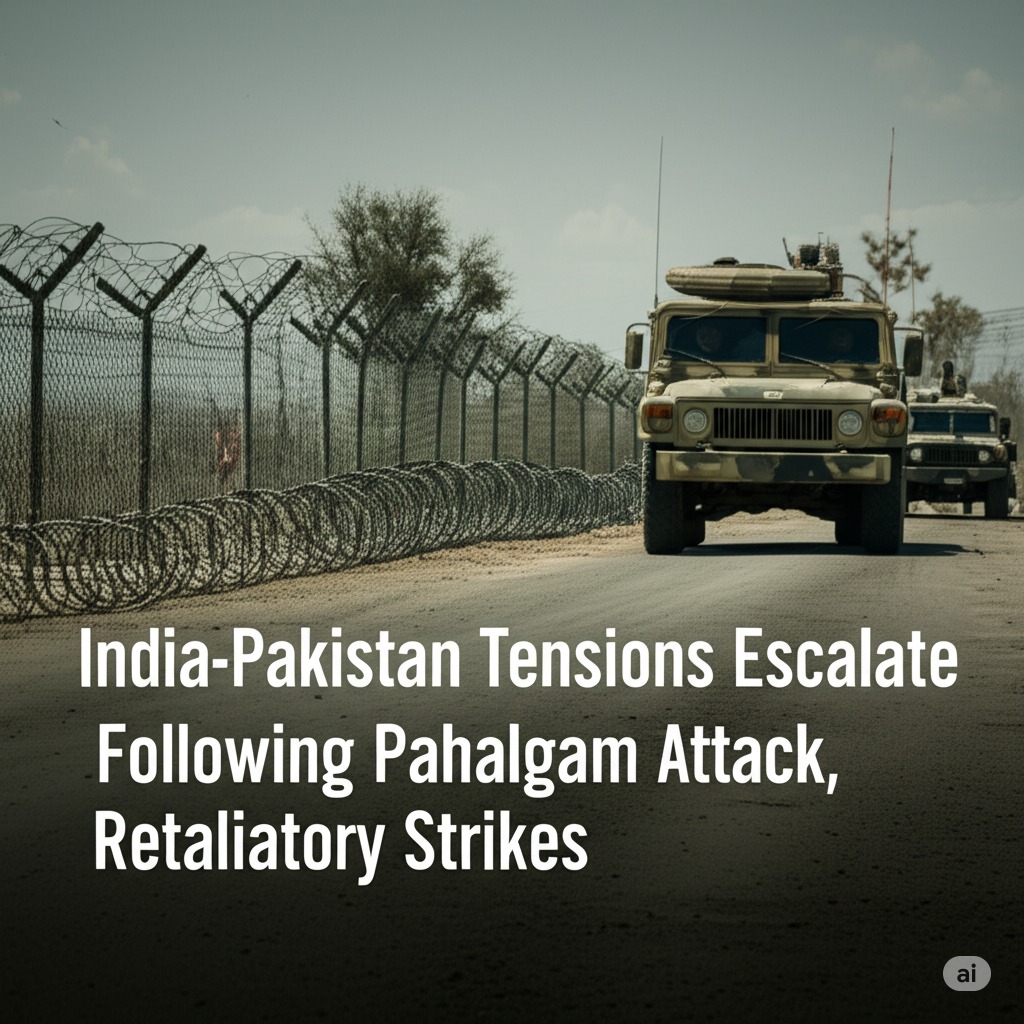India-Pakistan Tensions Escalate Following Pahalgam Attack, Retaliatory Strikes
Published on May 24, 2025 | Generated by AI
 🤖 AI-generated Image
🤖 AI-generated Image
Why It Matters
Tensions between nuclear-armed neighbors India and Pakistan have escalated sharply following a deadly terrorist attack in Pahalgam, Jammu and Kashmir, in late April. The incident, which resulted in significant civilian casualties, triggered a strong and multi-faceted response from New Delhi, fundamentally altering the security calculus in the region. This period of heightened confrontation underscores the deep-seated mistrust and the volatile nature of the relationship, particularly concerning cross-border terrorism, and is highly relevant for regional security and international diplomacy.
Background & Timeline
The current wave of tension was precipitated by the terror attack in Pahalgam on April 22, which claimed the lives of 26 individuals. In the immediate aftermath, India adopted an increasingly firm posture. By April 29, Prime Minister Modi granted the armed forces "full operational freedom" to determine their response. Simultaneously, India ramped up diplomatic pressure, condemning Pakistan as a "rogue state" at the United Nations for its alleged support of terrorism. Facing India's hardened stance, Pakistan reportedly moved radar systems near the border and expressed fears of an imminent Indian military strike. India also signaled potential leverage by putting Indus Water Treaty talks in abeyance. International concern grew, with the UN and the US urging de-escalation between the two nations.
What’s Happening Now
- May 7: India launched "Operation Sindoor," conducting precision strikes on nine alleged terrorist infrastructure sites in Pakistan and Pakistan-occupied Kashmir (PoK), linked to groups like Jaish-e-Mohammed (JeM), Lashkar-e-Taiba (LeT), and Hizbul Mujahideen (HM). The operation reportedly utilized advanced munitions like Scalp Missiles and Hammer Bombs, with India emphasizing it was precise, restrained, and non-escalatory, targeting only terrorist facilities.
- May 7-8: Pakistan confirmed the strikes, reporting casualties, and Prime Minister Shehbaz Sharif condemned the action as an "act of war," vowing retaliation. Pakistan initiated artillery fire along the Line of Control (LoC), and India activated its air defense network. Reports followed of Pakistan launching drone and missile attacks targeting Indian cities and military bases, which India claimed to have intercepted, stating its S-400 air defense system was effective and alleging the downing of Pakistani jets.
- May 8: Heightened security led to widespread airspace restrictions, with dozens of airports in northern and western India temporarily closed, causing significant flight disruptions. Border districts in India experienced precautionary blackouts.
- May 10: Amidst intense cross-border exchanges, Pakistan initiated contact, leading to direct talks between the Director Generals of Military Operations (DGMOs) of both nations. This resulted in an agreement for an immediate ceasefire across land, air, and sea, effective at 5 PM IST.
- May 10 (Post-Ceasefire): Despite the agreement, reports of ceasefire violations emerged within hours, including explosions and drone intrusions in Srinagar and shelling in Jammu, raising concerns about the durability of the truce. India maintained its firm stance against terrorism, stating that the ceasefire did not alter its position on issues like the Indus Water Treaty.
What Could Happen Next
-
1. Conditional Calm and Dialogue: The ceasefire largely holds despite isolated violations. Military-to-military communication continues, potentially leading to further confidence-building measures. Underlying issues of cross-border terrorism remain unresolved, but direct conflict is avoided due to the demonstrated capabilities on both sides and international pressure for de-escalation. Talks on broader issues remain contingent on Pakistan addressing terrorism.
2. Renewed Escalation: A significant terror attack, a major ceasefire violation, or a miscalculation by either side could trigger a breakdown of the truce. This might lead to another round of military action, potentially broader in scope than "Operation Sindoor," increasing the risk of unintended consequences and wider regional instability, possibly drawing more forceful international intervention.
3. Protracted Tensions and Economic Pressure: While large-scale military conflict is averted, tensions persist. India continues diplomatic and economic measures, such as maintaining the pause on the Indus Water Treaty and pushing for international financial isolation of Pakistan. This strategy aims to compel Pakistan to dismantle terror infrastructure, but it risks further destabilizing an economically vulnerable Pakistan, potentially leading to internal unrest or unpredictable actions.
This article is generated using AI-assisted summaries and verified timelines.
